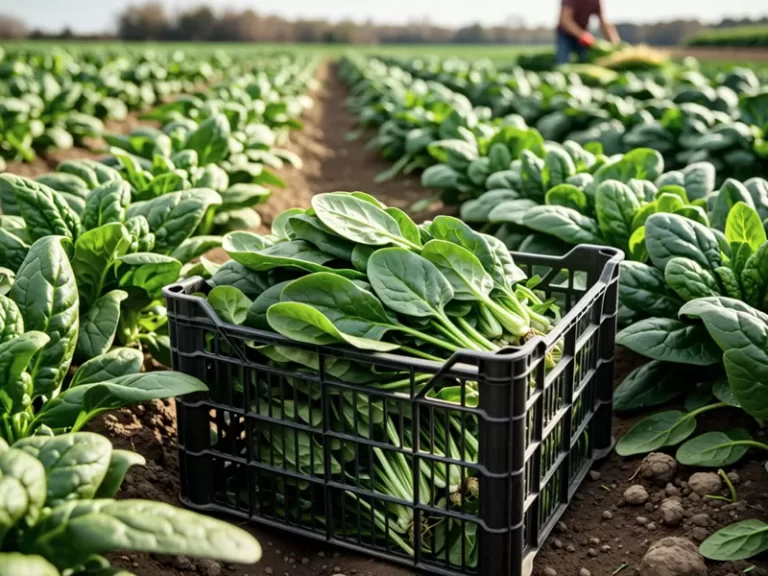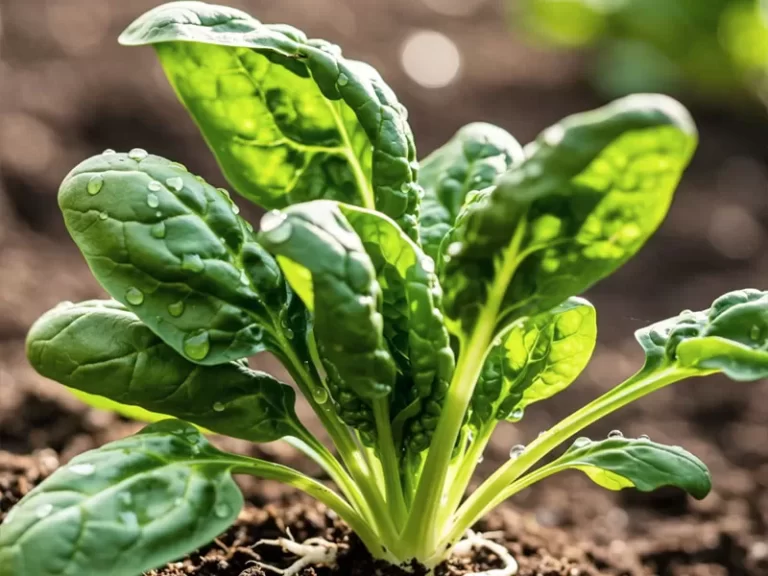Spinach planting harvest cheats
Proven Techniques to Boost Yield and Overcome Common Challenges
Spinach (Spinacia oleracea) is a nutrient-dense leafy green with soaring global demand, yet growers face persistent challenges like soil degradation, disease pressure, and yield instability. Drawing on field trials from the University of Arkansas’s spinach breeding program (funded by a USDA $3.57 million grant) and data from the Communications in Soil Science and Plant Analysis (2025), this guide synthesizes science-backed strategies to optimize your spinach production. Below, we detail actionable solutions for commercial growers targeting higher profitability and sustainable practices. (Spinach planting harvest cheats start here!)
⚙️ Soil Preparation and Health Management
Soil Structure Optimization
Spinach thrives in well-drained loamy soils with a pH of 6.5–7.0. Research shows:
Loam soil amended with 10% nettle residue increased fresh weight by 9.6× compared to controls, while reducing bulk density to 0.63 g/cm³ (ideal for root growth).
Sand-dominant soils require 15–20 t/ha of mature compost to improve water retention. Avoid raw manure to prevent E. coli contamination.
Pathogen Prevention
Rotation: Never plant spinach in fields that hosted spinach, beets, or chard within 3–5 years. Crop rotation reduces Fusarium wilt and root rot incidence by >40% This data reference Duluth News Tribune.
Biofumigation: Integrate mustard cover crops before planting. Glucosinolates in mustard suppress nematodes and fungal pathogens.
For rapid soil rebuilding, pair compost with our Slow-Release Organic Fertilizer (organic matter >45%) or use our Lignite Humic Acid Powder at 50 kg/ha to stimulate microbial activity.
🌱 Varietal Selection and Precision Planting
Disease-Resistant Cultivars
The University of Arkansas screens 600+ germplasms for resistance to downy mildew (Peronospora farinosa), white rust (Albugo occidentalis), and emerging leaf spots. Prioritize certified varieties:
‘Polka’ F1: Tolerant to races 1–15 of downy mildew.
‘Whale’ F1: Resists Fusarium wilt (race 2) and bolting.
Planting Protocols
Temperature: Optimal germination occurs at 10–20°C. Temperatures >24°C induce thermo-dormancy.
Spacing: Use 15 cm row spacing with 5 cm between seeds. Overcrowding increases humidity, triggering fungal outbreaks.
⚗️ Fertilization Strategies for Maximum Yield
Nutrient Synergy
Base Dressing: Apply 20 t/ha composted manure (avoid fresh manure) enriched with our Microbial Bio-Organic Fertilizer (contains Bacillus subtilis). Trials in Hunan, China, showed 33% wider leaves and 23% larger plant spread when combining 40 kg bio-organic fertilizer + 336 g chemical NPK per 7m² plot.
Foliar Boosters: At the 4–6 leaf stage, apply our Amino Acid-Trace Elements Liquid (1:200 dilution). Chelated Fe/Zn prevents chlorosis, increasing SPAD values by 22%.
Water-Soluble Formulations
Vegetative Stage: Use NPK 30-10-10 + TE at 5 kg/ha to accelerate leaf expansion.
Maturation Phase: Switch to NPK 10-5-45 + TE at 3 kg/ha to enhance leaf thickness and post-harvest shelf life.
🐛 Integrated Pest and Disease Control
Preventive Regimens
Seed Treatment: Soak seeds in warm water (50°C) for 25 minutes to kill Verticillium spores.
Biological Controls: Apply Anti-Replant Microbial Agent containing Trichoderma harzianum at planting. Reduces root rot by 60% in continuous cropping systems.
Curative Measures
Downy Mildew: Spray potassium phosphite (5 ml/L) mixed with MKP (0-52-34) to boost plant immunity.
Aphids/Leaf Miners: Release Aphidius colemani parasitoids weekly at 50/m².
🧪 Water and Nutrient Use Efficiency
Smart Irrigation
Soil Moisture Sensors: Maintain 30–50 kPa tension. Overwatering (soil saturation >24 hours) causes Pythium root rot.
Timing: Water between 5–8 AM to allow foliage drying. Drip systems reduce disease risk by 70% vs. overhead sprinklers.
Fertigation Synergy
Inject 420-0-0 Liquid Nitrogen Fertilizer at 10 L/ha into irrigation during rapid growth. Pair with Calcium-Magnesium Fish Protein Liquid to prevent tip burn.
🧺 Harvest and Post-Harvest Handling
Timing and Techniques
Baby Leaf: Harvest at 15–20 cm height (usually 35–40 days). Cut 2.5 cm above the crown to enable regrowth.
Bunched Spinach: Harvest outer leaves first when they reach 8–10 cm.
Cooling Protocol
Hydro-cool within 1 hour of picking to 1°C. Delaying cooling by 3 hours accelerates vitamin loss by 30%.
💎 Conclusion: Building a Profitable Spinach Production System
Spinach farming profitability hinges on preemptive soil health management, precision nutrition, and genetic resilience. Key takeaways:
Loam soils amended with nettle residue or compost elevate yields up to 9.6×2.
Bio-organic + chemical fertilizer blends increase leaf size by 33%.
Resistant varieties and microbial agents slash disease-related losses by >60%.
Adopting these spinach planting harvest cheats positions growers to tap into the $25B global leafy greens market sustainably.
If you are interested in this article, or have any questions that need to be answered, You can find us at any time through the chat icon in the lower right corner of the webpage.
Of course, you can also check out our other social media (such as Linkedin) to learn more about us.


Functional liquid fertilizer
Functional liquid fertilizer penetrates directly through the cell membrane and quickly
Contains chelated trace elements (such as iron, zinc, boron)
Add seaweed polysaccharide/humic acid to improve crop drought resistance
Amino acid liquid fertilizer promotes 45% increase in flower bud differentiation rate%
Sugar alcohol carrier technology accelerates calcium and boron transportation to prevent blueberry deficiency
